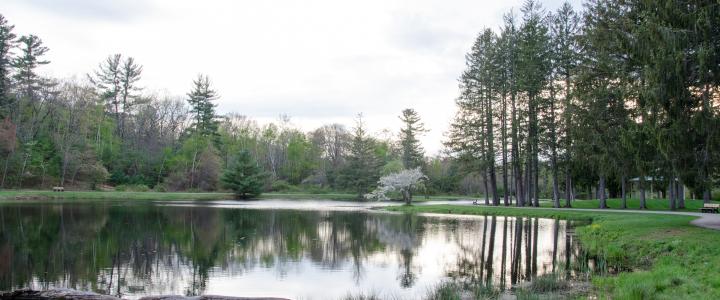
Rules updates in the Land Resources Management Program
New Hampshire’s rules for Alteration of Terrain and Wetlands have recently been updated. The adopted versions have been posted on the NHDES website and our Land Resources Management Program has produced a couple of videos to help explain the changes.
Land development rules
The changes to the Alteration of Terrain rules relate to agriculture, redevelopment, stormwater treatment and solar arrays. They also include a revised definition of “earth-moving activities” in or near protected shoreland with steeper slopes. To read the full adopted rules, visit the administrative rules area of our website. There is also a new video explaining these updates on our YouTube channel. Note the following specific changes that may relate to lakes:
- Pollutant Discharge Minimization Requirements (Env-Wq 1507.03).
- Acceptable stormwater treatment practices are now listed for projects that discharge to waterbodies impaired for phosphorus and/or nitrogen, Class A surface waters and watersheds of Outstanding Resource Waters.
- “…significantly alter the characteristics of the terrain” (Env-Wq 1502.58).
- The definition has been revised. Env-Wq 1502.58(c) defines earth-moving activities of 2,500 square feet or more, with any portion within 50 feet of a surface water that is subject to runoff over land having an average grade of 25%.
- This requirement is still included in the new rules, but the definition language has changed, and it now only applies to projects that are located within the protected shoreland, as defined in RSA 483-B.
For other questions about these updates and their relationship to land development within the protected shoreland, please email shoreland@des.nh.gov or call (603) 271-2147 and ask to speak with the inspector of the day.
Wetlands rules
The Wetlands rules updates became effective on October 13, 2023. Several highlights include:
- Mitigation hierarchy removal. Permit applicants are not required to prove there are no local mitigation options before opting for an in-lieu fee option.
- Greater Wetlands Permit by Notification (PBN) form accessibility and ease of use. The form has been shortened from 10 (printed) pages down to seven.
- The PBN form also includes two new project categories:
- Minimum impact, single lot, residential driveways (one only).
- Minimum impact pond maintenance.
It is possible you may need to refresh your browser window to access and download the latest updated versions of wetland permit application forms.




